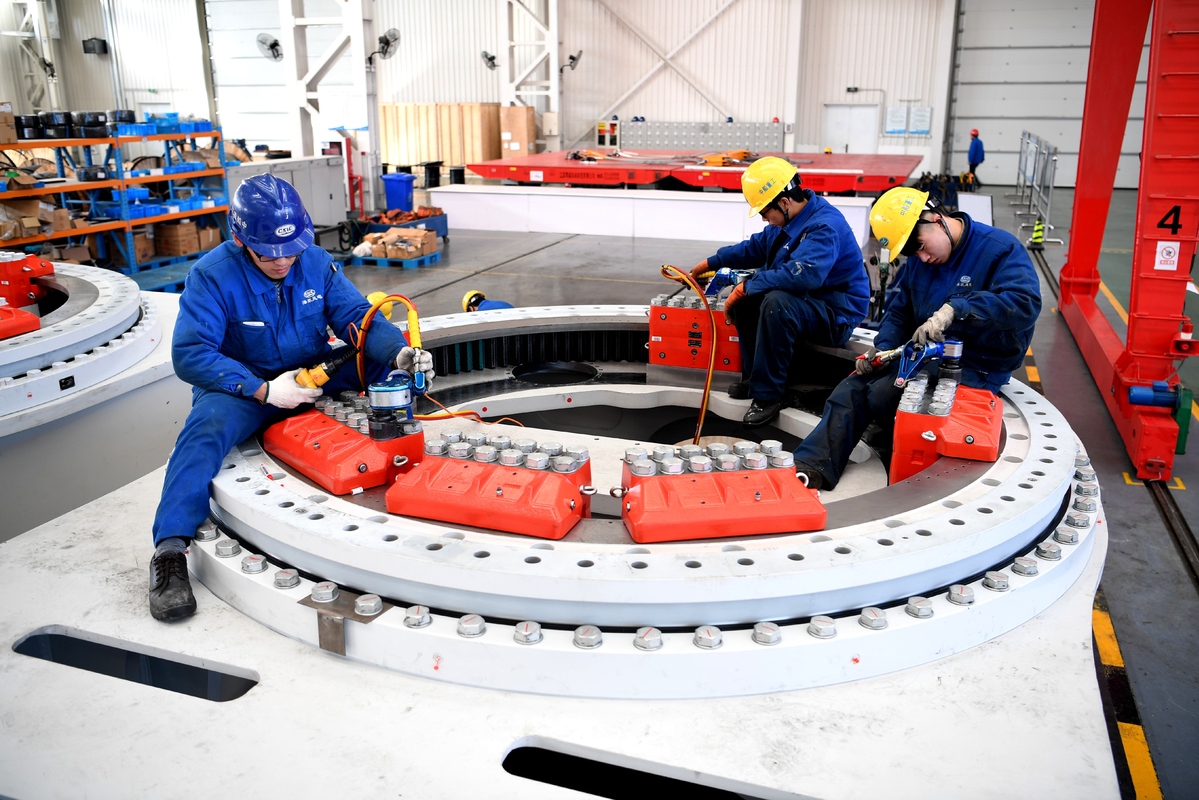Competition, not State versus private, key to productivity


Everyone in the United States empathizes with the sort-of joke from comedienne Lily Tomlin - "We don't care. We don't have to. We're the phone company!"
A 2018 survey by Yahoo Finance showed that Comcast, a "cable" company that provides television and broadband internet service to homes, is the most hated company in the US. Other telecom companies such as AT&T and Verizon Wireless in mobile phone service and Charter Communications and Cox in cable are always near the top of the "most hated" lists.
I was used to terrible service and abusive contracts from mobile phone service providers in the US, so I've been pleasantly surprised by China's three big telecom providers - China Mobile, China Telecom and China Unicom. There is good coverage nationwide, the prices are cheap, and service is quick and satisfactory.
In most areas, the US telecom companies have a local monopoly, so there is not much incentive to provide good service or cheap prices.
Thank goodness AT&T was prohibited from buying smaller T-Mobile by the antitrust actions of the government in 2011. If that deal had gone through, the US public would have been at the mercy of a Verizon Wireless-AT&T duopoly in mobile phone service, so things would have been worse.
But, to my dismay, Charter was allowed to buy Time-Warner cable in 2016. And, against the wishes of the Trump administration, a court allowed AT&T to acquire the remaining parts of Time-Warner, which owns HBO, CNN and Warner Bros. Thus, the anti-competitive concentration of economic power has actually gotten even worse in recent years.
To be fair, no one has figured out how to deal with "natural monopolies", which are markets, especially in infrastructure, where it would be wasteful to create two parallel competitors. Building two competing railroads to every town or running two telecom lines to every apartment could be prohibitively expensive.
In the US in the 1800s, a critical question was how to stop railroads from using monopoly power to exploit farmers along their routes. Many countries tried a "regulated monopolies" system in which the companies were guaranteed a fairly low but steady return on their capital invested. But, this led to bloated, inefficient companies. Some countries, such as the US in wholesale electric power and the UK in railroads, tried to replace the regulated monopolies with real competition, but that has not worked well.
China's solution, which is unique in the world, is creating competitive State-owned enterprises. The three large Chinese telecom companies are all owned by the central government, but they compete ferociously with each other.
In many sectors, especially steel, concrete and construction, these Chinese SOEs have built over-capacity. But, this is not because of State ownership. Economists use the term "hog cycle" to describe a market where future investment needs to be made well in advance of usage. During a boom market, lots of hog farmers jump in and raise more piglets. But, when all these piglets come to market, the price collapses because of oversupply. The same thing happened in the housing market in the US and elsewhere.
At the recent China Development Forum in Beijing, I heard many Western speakers and participants saying that the SOE sector has increased recently as a percentage of the Chinese economy. I have no idea where they got this idea from, but it is simply false.
From 2013 to 2018, SOEs' share of industrial assets fell from 33.7 percent to 28.2 percent, according to a 2018 report by the Asia Society Policy Institute and the Rhodium Group.
Plus, SOEs' share of revenue has fallen throughout the economy, especially in rapidly growing consumer sectors. The Chinese government classifies industries into three types. "Key" industries include telecom, railway, oil and gas, coal, shipping, airline and defense. In this category, SOE ownership has declined from 92.3 percent to 85.5 percent from 2013 to 2018.
These industries are dominated by SOEs, but many are highly competitive. In my experience, the airlines, railways and telecoms in China provide better service than those in the US.
"Pillar" industries include auto, chemical, electronics and other large, capital-intensive sectors. SOE revenue share in this category fell from 52.5 percent to 44.2 percent from 2013 to 2018.
In the large and fast-growing "normal" category that includes most services and pharmaceuticals, agriculture, tourism plus general trade and manufacturing, the SOE share of revenues fell from 24.4 percent to 14.2 percent in the same time period. In China, almost all the companies in this category face strong competition from both domestic and foreign rivals.
Finally, it is often claimed that the lower return on assets in SOEs than in the private sector shows that SOEs are less efficient. For example, the Asia Society-Rhodium study shows that ROA for SOEs was 4.4 percent while private ROA was 9 percent in 2018.
However, this does not prove that SOEs are less efficient. Industries that are more capital - intensive will always have a lower ROA than more labor-intensive industries that hold fewer assets. The ROAs of AT&T, Verizon and Comcast have all averaged less than 5 percent over the past 10 years. Most of China's SOEs have ROAs at about this level since they are in similar capital-intensive industries.
China is in the process of reforming its SOEs. These reforms are useful and needed. But, facile statements that ignore industry differences and the terrible track record of capital-intensive near-monopolies of other countries are, at best, misleading.



































